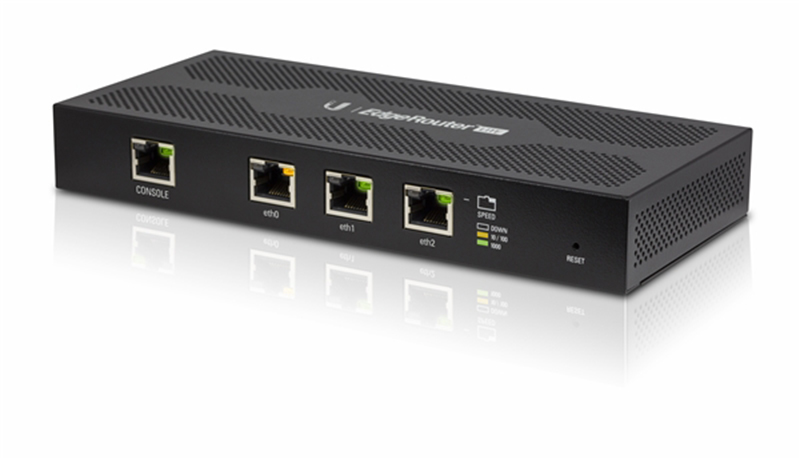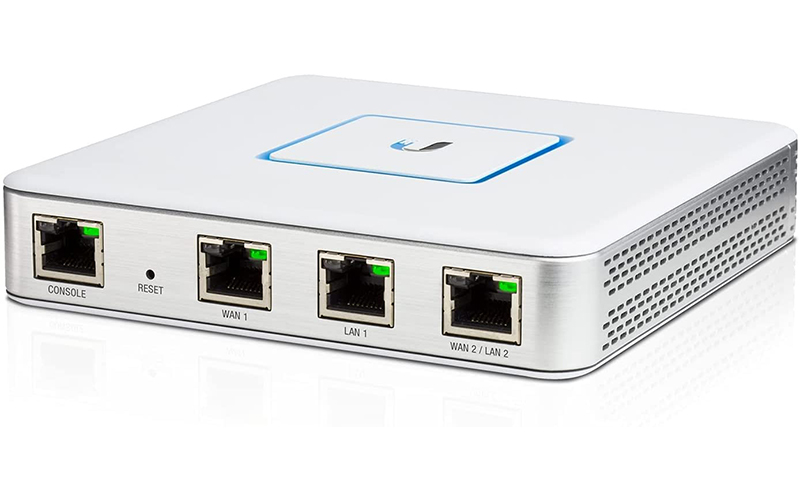Choosing a satisfactory Wi-Fi router is not so easy, you must do your homework before choosing. This is why we compare these two network routers-Edgemax and Unifi.
The choice of router actually depends on several factors—speed, coverage, and functionality, which make them easier to use when accessing the Internet. We will talk about two of them.
What are the differences between the Unifi and Edgemax?
| Unifi | Edgemax | |
| Number of ports | 4 gigabit | 2 to 4 gigabit |
| Wi-Fi throughput speeds | 167 Mbps | 300 Mbps |
| Measurements (inches) | 19.06 x 6.46 x 1.73 | 6.2 x 5.1 x 2.1 |
Ubiquiti Unifi and Edgemax一compare
Design
In Unifi, the construction of each component is of the highest quality, using USG and Switch connection. Both are designed with an all-metal housing, providing complete EMI protection and a durable appearance. However, these are not complete packages in this router; the Unifi controller can.
For Edgemax, the design is a two-port design. The method it uses to achieve this is through beamforming. The beamforming process will allow it to direct any wireless signal through it to the connected device, and it will use the MU-MIMO system to manage Internet traffic in a more efficient manner.
 Performance
Performance
Unifi is so good in the network field for a reason: USG. This is also called the Unifi Security Gateway. This is a 3-port enterprise gateway router that can provide you with a gigabit Internet connection. In order to deploy it in Ubiquiti Unifi, it is important to connect it directly to the AT&T modem through the WAN port in the router, and then connect one of the Unifi switches to the LAN port.
The controller is the hardware or software responsible for unified management and control of Unifi products, and allows you to manage and set up your own network. Its integrated wizard will take you through time zone settings, wireless SSID settings, device settings and login. From here, you can use the controller to launch the dashboard and independently manage all your devices.
You can choose to use it as it is, or you can purchase the Unifi Cloud Key, which is a hardware device that can be used to operate the Unifi controller software. If you choose a key, it will allow you to operate it without requiring a virtual machine, computer, laptop, or any other hardware that can be used to install the controller.
It is important to note that you cannot find the built-in radio in the USG. Therefore, the result of enabling bridge mode will not disable or negatively affect the wireless guest network or other important functions. In addition, the acceleration of the USG hardware will allow a maximum speed of 3 Gbps, at least when the speed of the ISP can match.
The most useful functions that can be found in the USG include:
- VLAN support
- Hardware acceleration with 3Gbps wire speed
- SSH (shell) and console access
- Able to bridge at least two Ethernet interfaces
- Multiple VPN modes, including VPN server, VPN client, site-to-site VPN, etc.
- USG lacks some functions, they are:
- Built-in VPN client supporting certificate-based (X.509) authentication
- Hardware acceleration in bridging helps achieve Gbps speed even when bridging ports
Edgemax is designed to be a data center router. It has a case with permanent mounting brackets, and the cooling fan makes a lot of noise. This leads to most people not choosing it as a desktop router.
The functionality present in Edgemax is due to the use of Vyatta, which is an open source system-so the best way to find out if it works for you is to be familiar with the Vyatta operating system. The basic systems that exist here include connection management, which controls the flow accounting and connection tracking system, CLI, SNMP, system management and your logging process and the devices connected to it. It achieves this through various services, such as UBNT discovery, DNS, logging, web caching, etc.
Speed
Speed is also a very important factor when choosing a router.
The Wi-Fi of the unifi router is absolutely correct; the 2.4GHz band has a speed of 167 Mbps, while the 5GHz band has a speed of 852 Mbps. If you have a lot of mobile devices, such as laptops, tablets, and smart phones, if you use a 2×2 adapter, it is reasonable to expect that the output speed of the router is about 400 to 500 Mbps, which is sufficient for a large amount of surfing and streaming need.
Ubiquiti Edgemax 2.4GHz band uses a 3×3 design, and overall the speed is very high. The Wi-Fi speeds expected here range from a minimum of 826 Mbps to a maximum of 928 Mbps.
Ubiquiti Unifi vs. Edgemax
Ubiquiti Edgemax
Ubiquiti Edgemax, it is one of the most affordable options among Ubiquiti routers.
Pros
- It has advanced routing functions
- Including wire-speed Gigabit routing
- Easy to configure
Cons
- It does not have a plug and play option out of the box
- Limitations in GUI configuration (instead, it has CLI)
- The documentation is not so easy to understand
Ubiquiti Unifi
There is almost no problem with its controller update or firmware. Although the only problem we encountered was the use of SFP+ to auto-negotiate the 10 Gigabit link of the 10GBase-T module. If you are not proficient in network knowledge, this will be a difficult choice.
Pros
- Very reliable and fast internet connection
- Coverage is great
- Comes with very useful applications
- Easy to customize and extend
Cons
- Difficult to use for novice users
Conclusion:The Ubiquiti Unifi or the Edgemax?
When you need a good network router option, both of these are good choices and will provide you with similar benefits. However, Edgemax is a better choice because it is more user-friendly for novice users, even though this corresponds to your high expectations for Ubiquiti routers-and it also has higher connection reliability.
Want to know more, please click here: Ubiquiti, Cisco Routers, Huawei WiFi Routers, Juniper Routers, Xiaomi WiFi Routers
Learn more:




